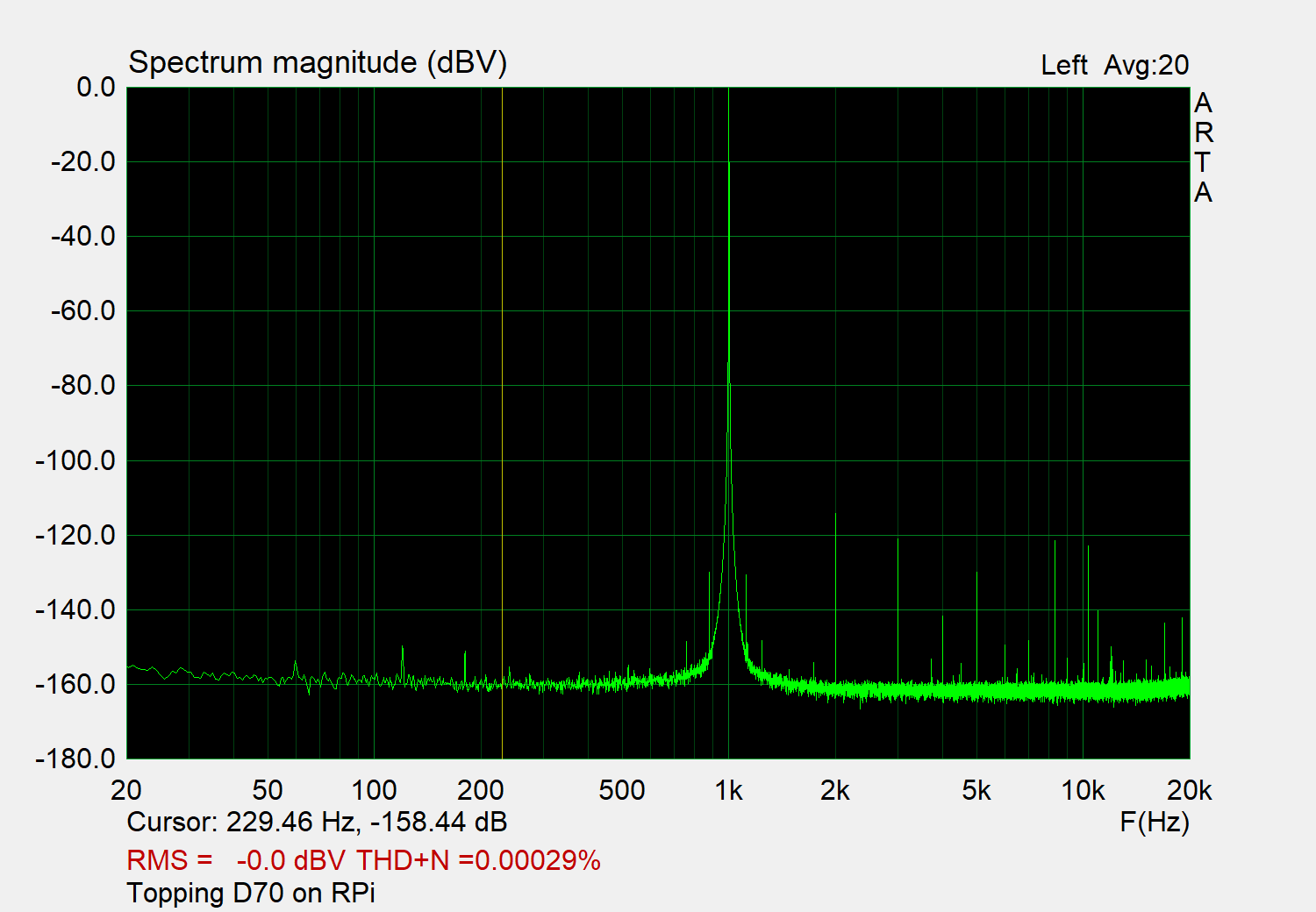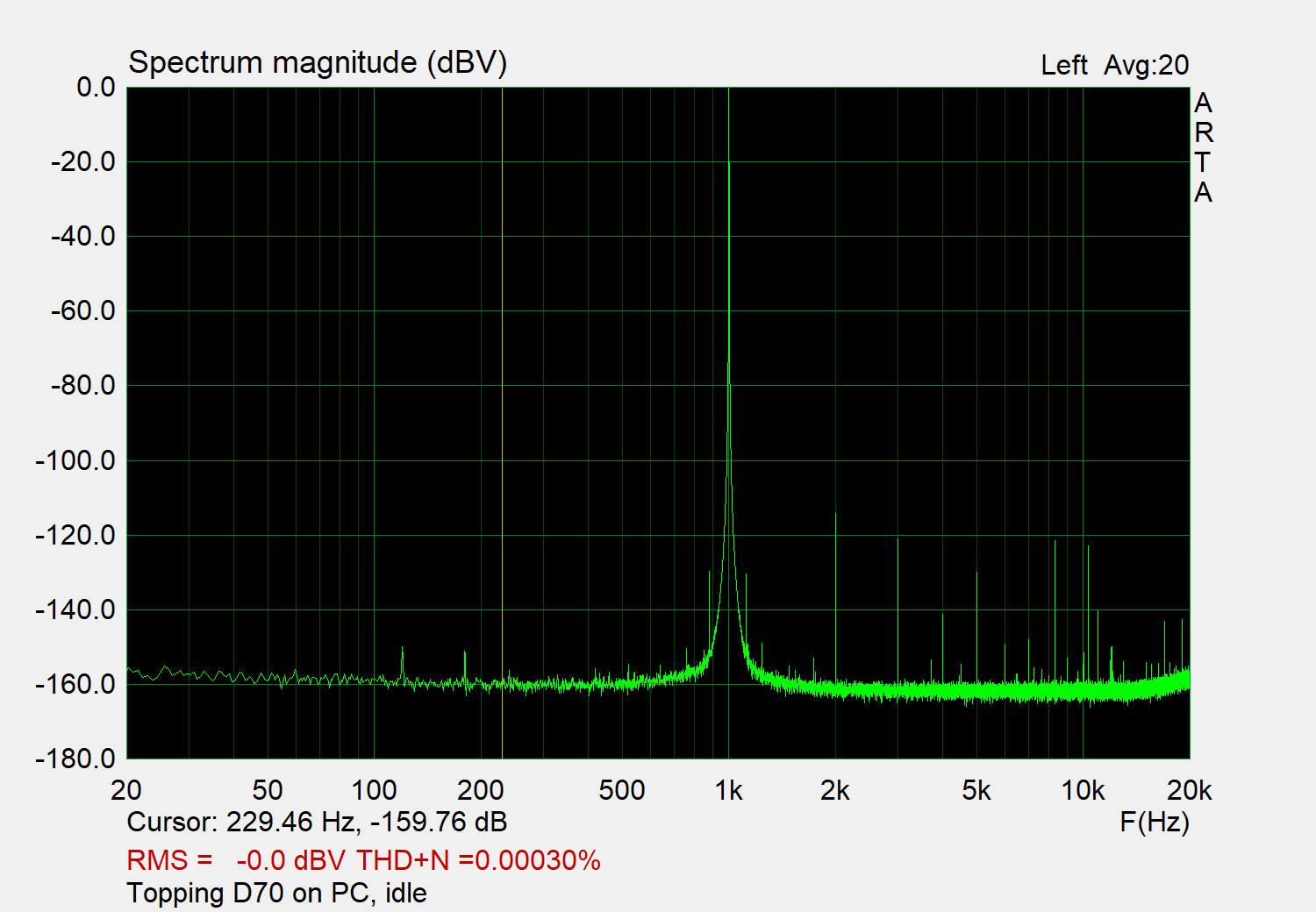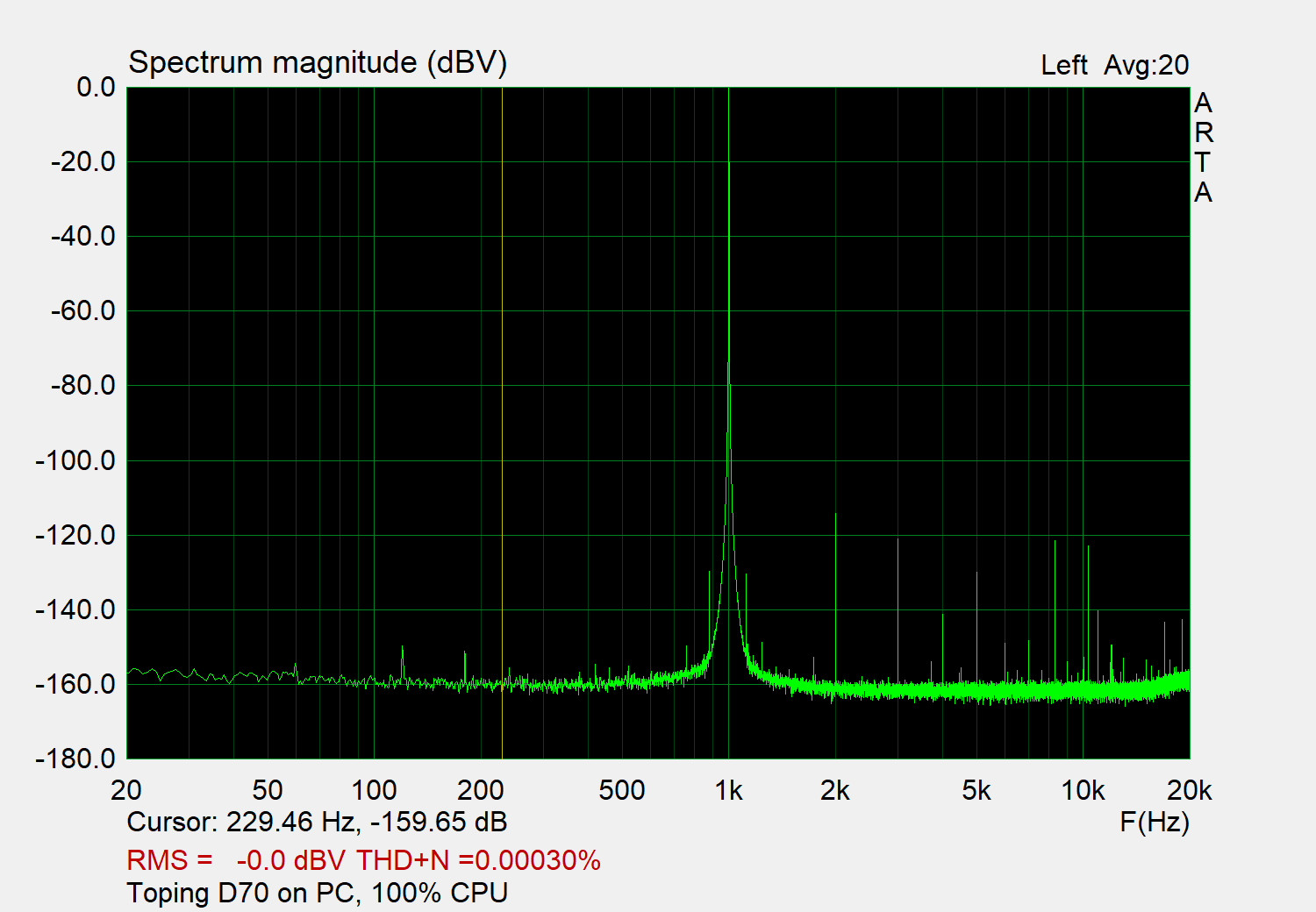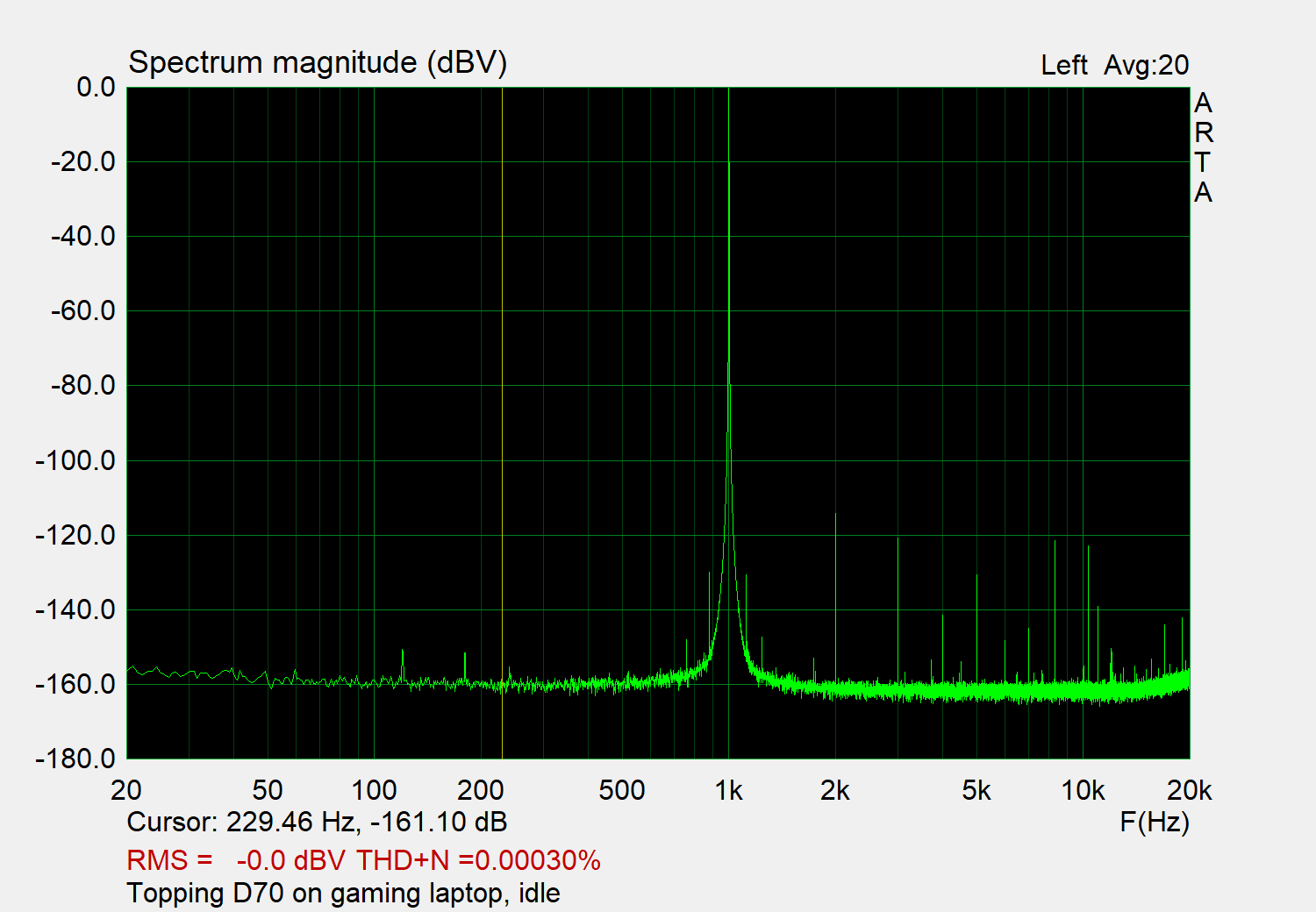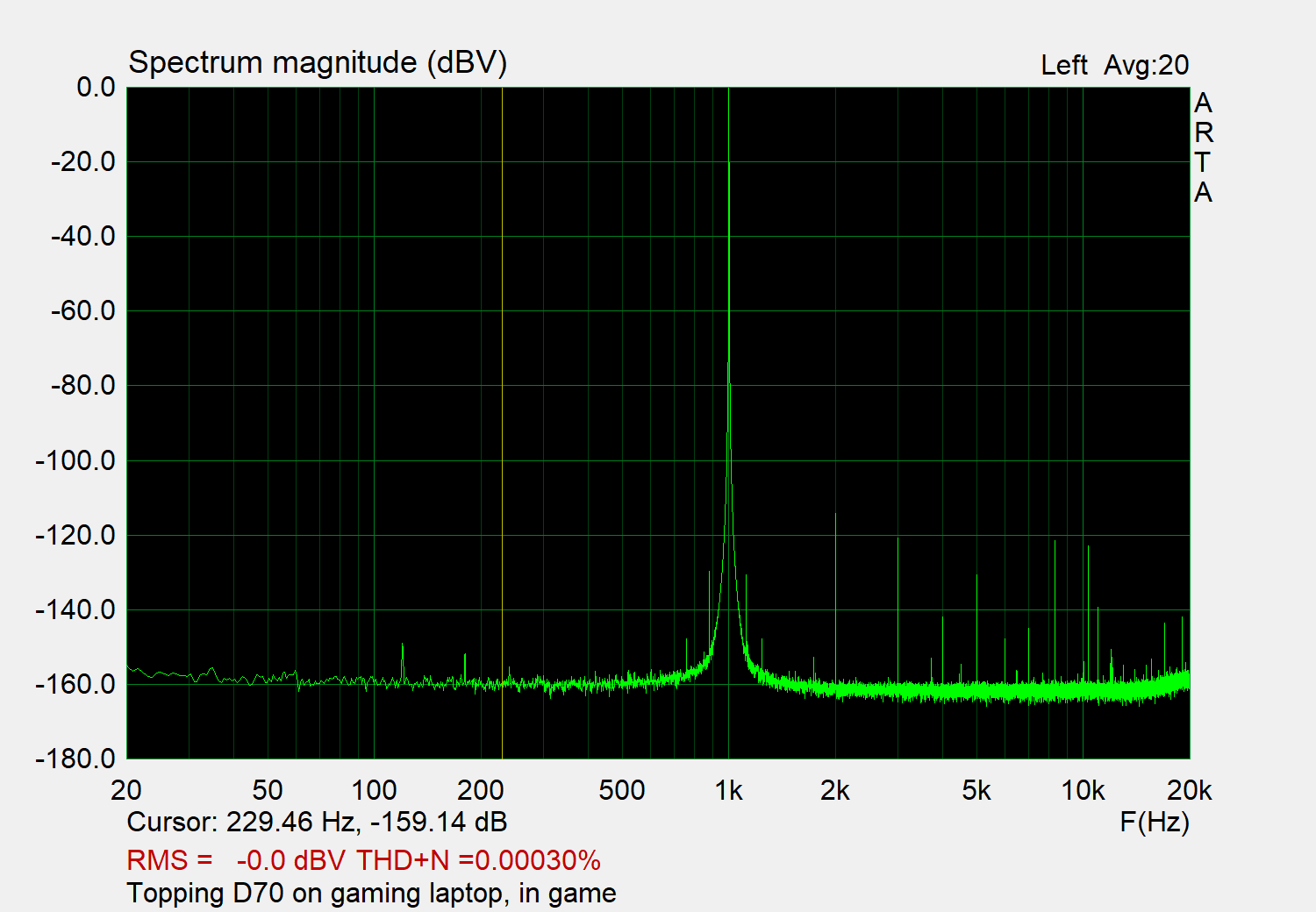Ok, results are in, and I’m posting here, because we’re talking about USB isolators. What I did was measure THD+N for a 1kHz sine wave played on the Topping D70 when connected to a USB port on my RPi, then on my PC and finally on my son’s laptop. These are the graphs:
-
RPi
-
PC, when idle:
-
PC, 100% CPU, 80% HDD:
-
Gaming laptop, idle:
-
Gaming laptop, in game:
I personally see absolutely no difference in the THD+N or in the shape of the graphs - especially the noise floor - that is not statistical variation. If anyone can, please let me know. I can interpret the results in two ways; you can pick your own explanation:
- The PC and the gaming laptop are just as good an audio source as the RPi, far from “horrible”, as the video implies, or
- They are indeed horrible audio sources, but the D70 does an excellent job at isolating the noise “seeping” through USB.
Interestingly, I am getting a THD+N figure of about 0.00030%, very close to Amir’s 0.00034%, which can be found here:
[Review and Measurements of the Topping D70 DAC | Audio Science Review (ASR) Forum](Review and Measurements of the Topping D70 DAC | Audio Science Review (ASR) Forum
The PSU harmonics are quite smaller on my graphs. It’s possible Topping improved on that. Note that it’s an internal PSU, no less.
For reference, my PC is an 8-core Intel Core i9-11900K @ 3.5GHz with RTX 3050 graphics, running Windows 11. The laptop is a Razer Blade 14" 144Hz AMD Ryzen 9 5900HX @ 3.3GHz gaming laptop with RTX 3060 graphics, same OS. My son was playing Rocket League at max quality during one of my measurements.
